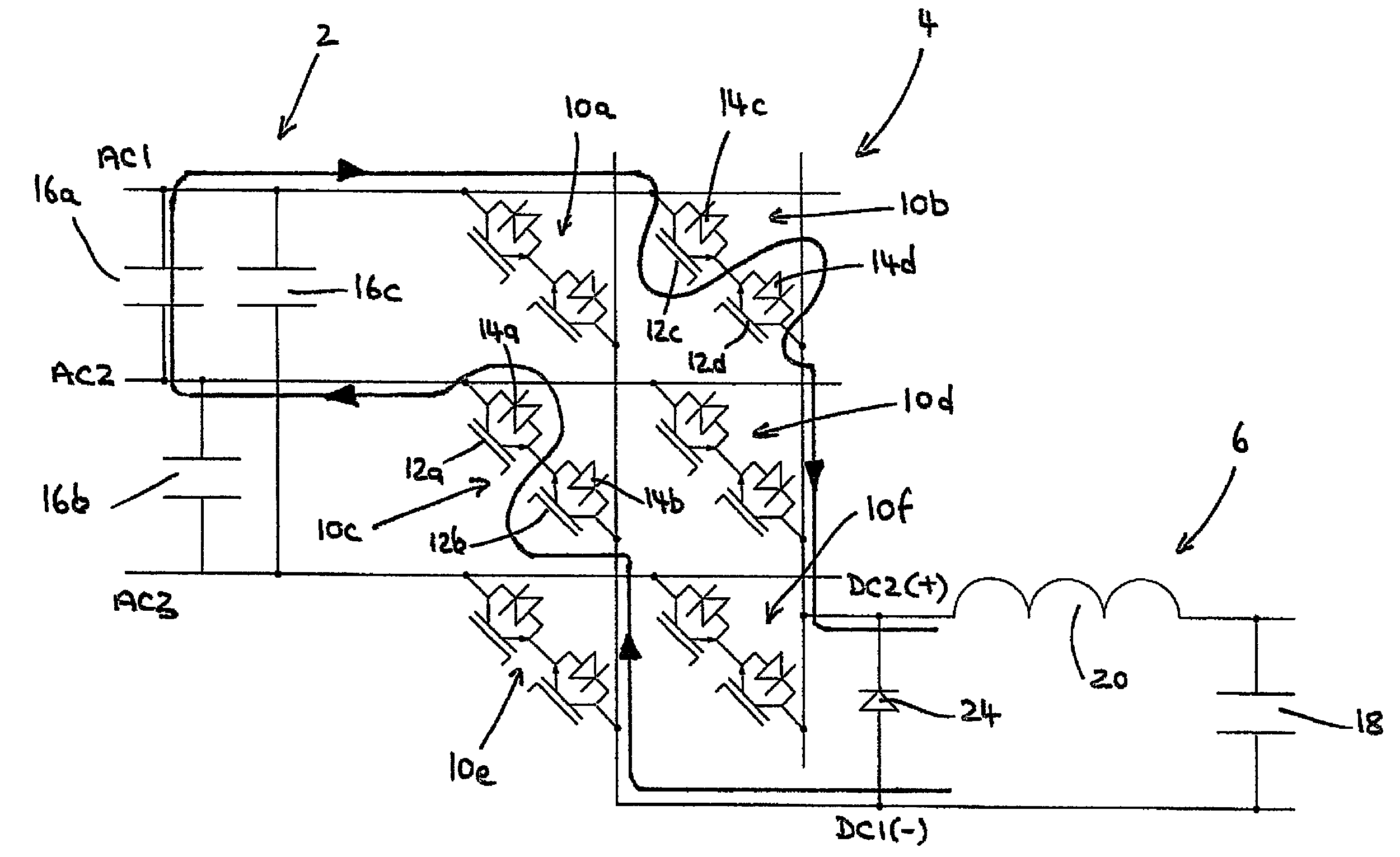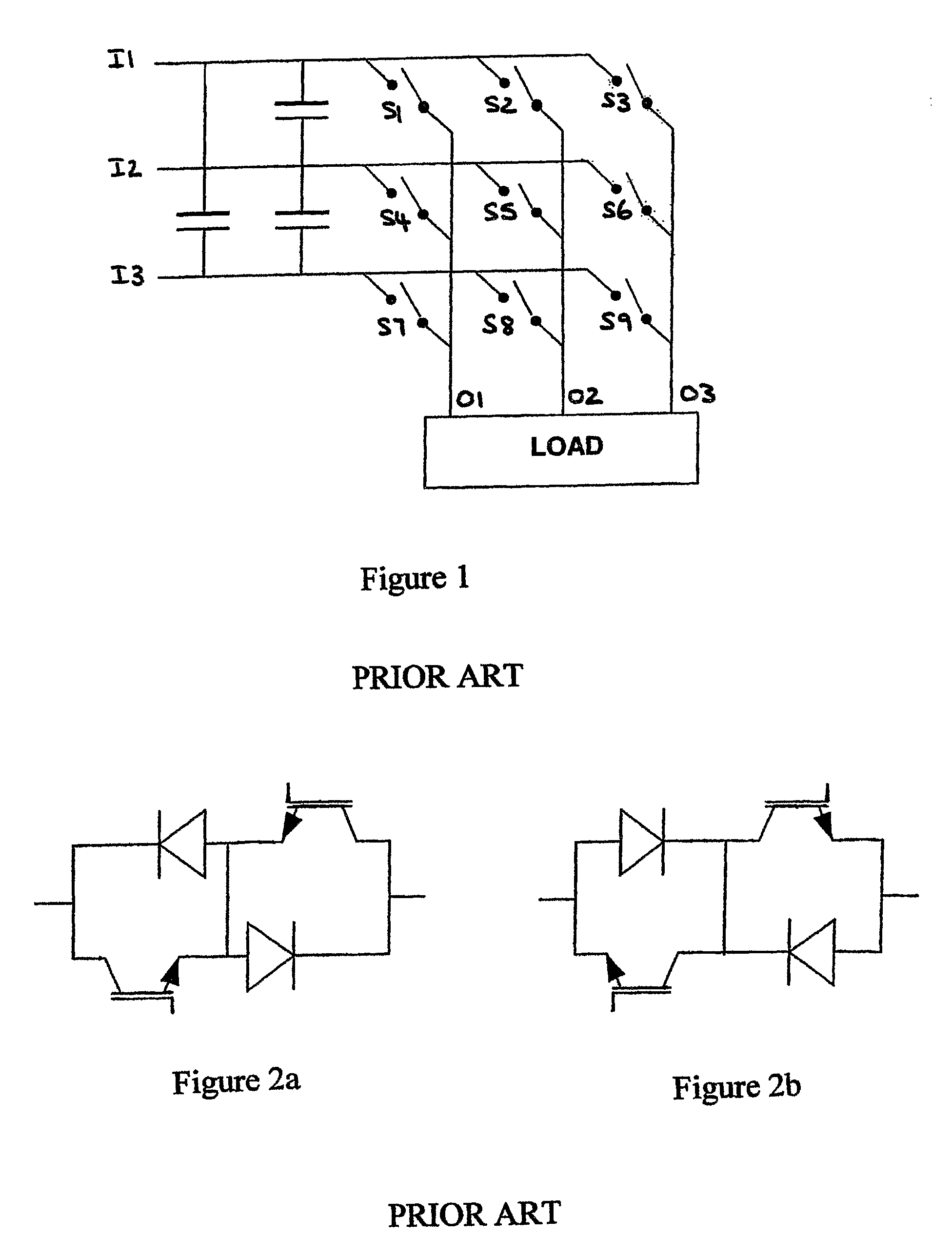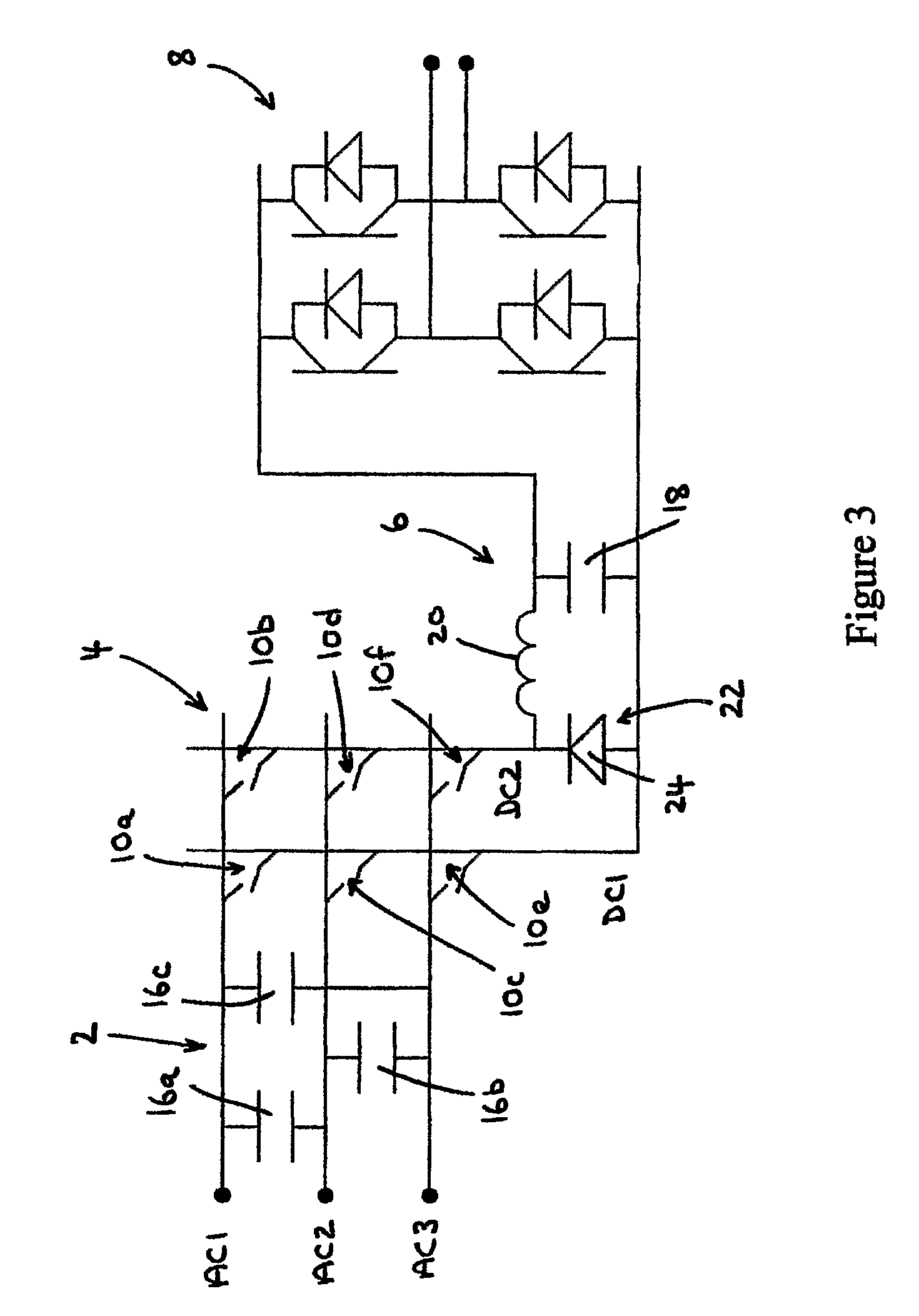Matrix converters
a matrix converter and converter technology, applied in the field of matrix converters, can solve the problems of large over-voltage, severe damage to the matrix converter, and lack of natural freewheel paths
- Summary
- Abstract
- Description
- Claims
- Application Information
AI Technical Summary
Benefits of technology
Problems solved by technology
Method used
Image
Examples
Embodiment Construction
[0058]The topology and operation of a matrix converter according to the present invention will now be explained with references to FIG. 3 to 6. FIG. 3 shows a basic two-stage power converter including an ac line filter 2, a matrix converter 4, a dc-link filter 6 and a voltage source inverter 8. Any other suitable type of inverter (such as a current source inverter, for example) can be used in place of the voltage source inverter 8 depending on the particular application. The voltage source inverter 8 of the power converter may be implemented using the ALSTOM VDM25000 product, available from ALSTOM Power Conversion Limited, Marine and Offshore Division, Boughton Road, Rugby, CV21 IBU, United Kingdom.
[0059]The matrix converter 4 includes three ac voltage lines labelled AC1, AC2 and AC3, and two dc voltage lines labelled DC1 and DC2. Six switch assemblies 10a to 10f allow any of the ac voltage lines AC1, AC2 and AC3 to be connected to any of the dc voltage lines DC1 and DC2. For exampl...
PUM
 Login to View More
Login to View More Abstract
Description
Claims
Application Information
 Login to View More
Login to View More - R&D
- Intellectual Property
- Life Sciences
- Materials
- Tech Scout
- Unparalleled Data Quality
- Higher Quality Content
- 60% Fewer Hallucinations
Browse by: Latest US Patents, China's latest patents, Technical Efficacy Thesaurus, Application Domain, Technology Topic, Popular Technical Reports.
© 2025 PatSnap. All rights reserved.Legal|Privacy policy|Modern Slavery Act Transparency Statement|Sitemap|About US| Contact US: help@patsnap.com



